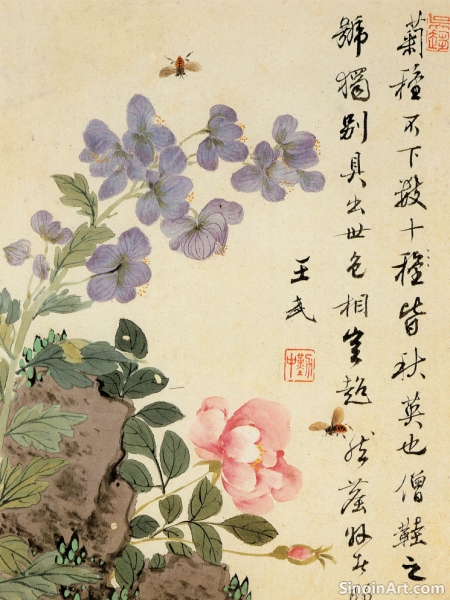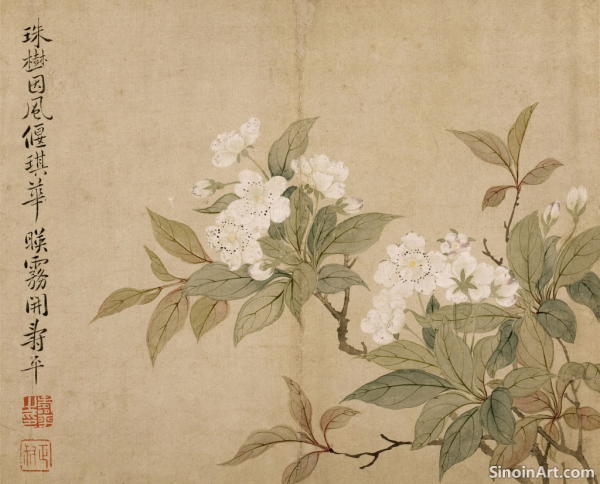Techniques and Tools: Unveiling the Secrets of Gongbi
|
The creation of a Gongbi masterpiece is a labor of love, requiring not only artistic skill but also a deep understanding of specific techniques and tools. The artist’s palette consists of a variety of brushes, each designed for a particular purpose. Fine brushes, often made of wolf hair or badger hair, are used for outlining, while broader brushes, made of goat hair or a mix of animal fibers, are employed for color washes. The selection of brushes is crucial in achieving the desired level of detail and control.  Ink is another essential component. Traditional Chinese ink is produced from soot and glue, and its quality directly affects the depth and clarity of the painting. Ink sticks are ground with water on an inkstone, creating a range of tones from deep black to soft grays. The consistency of the ink is carefully controlled, as thinner ink is used for delicate details and thicker ink for bolder strokes. The artist's skill in ink manipulation is vital to the final effect of the artwork.  Pigments used in Gongbi painting are traditionally sourced from natural materials, including minerals and plants. These pigments are meticulously ground and mixed with water and a binding agent, such as glue or starch, to create a paint that is stable and vibrant. The application of these pigments is a delicate process, often involving multiple layers of thin washes to build up depth and luminosity. Each layer needs to be applied with precision and care.  The painting surface also plays a significant role. Silk or fine rice paper are the most common choices, each offering a unique texture and absorbency that affects the flow of ink and paint. The artist must carefully prepare the surface by sizing it with alum to prevent the colors from bleeding. This process requires experience and attention to detail, as the wrong preparation can ruin the painting. Mastering the techniques of Gongbi painting is a journey that requires patience, dedication, and a deep understanding of the materials involved. From selecting the right brush to preparing the painting surface, each step is crucial in creating the delicate and precise artworks that define this style. It's a tradition passed down through generations, constantly refined and honored by those who practice it. |
Tag : Gongbi painting techniques, Chinese ink painting, brush types, Chinese pigments, rice paper painting
Related information
- Gongbi and the Representation of Textiles and Patterns
- Gongbi and the Depiction of Water: Capturing the Flow and Spirit
- The Use of Texture in Gongbi Painting
- Famous Gongbi Artists: Masters of the Brush
- Gongbi Painting and Its Cultural Significance in China
This article explores the meticulous representation of textiles and patterns in Gongbi painting, highlighting the detailed linework, color variations, and how these elements convey texture, volume, and contribute to the overall narrative of the artwork.
This article explores the depiction of water in Gongbi painting, highlighting the techniques used to capture its flow and movement, the use of color to suggest its depth, symbolic significance, and how it enhances the overall sense of harmony and balance within the artwork.
This article explores the use of texture in Gongbi painting, highlighting the techniques of layering color washes, varying ink density, and using specific brushstrokes to simulate the appearance of different surfaces and enhance the overall visual realism of the artwork.
A profile of influential Gongbi artists throughout history, highlighting their contributions and styles.
This article explores the cultural significance of Gongbi painting in China, highlighting its historical importance, its role in reflecting cultural values, its connection to nature, its emphasis on discipline, and its continued relevance in modern Chinese society.